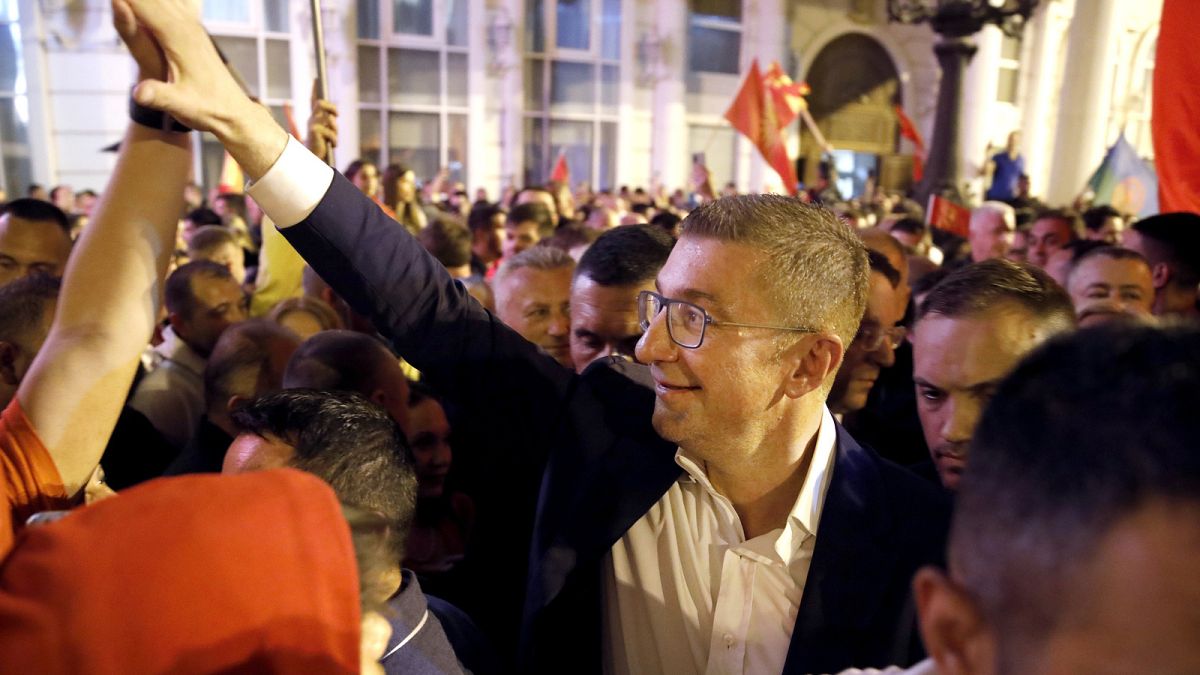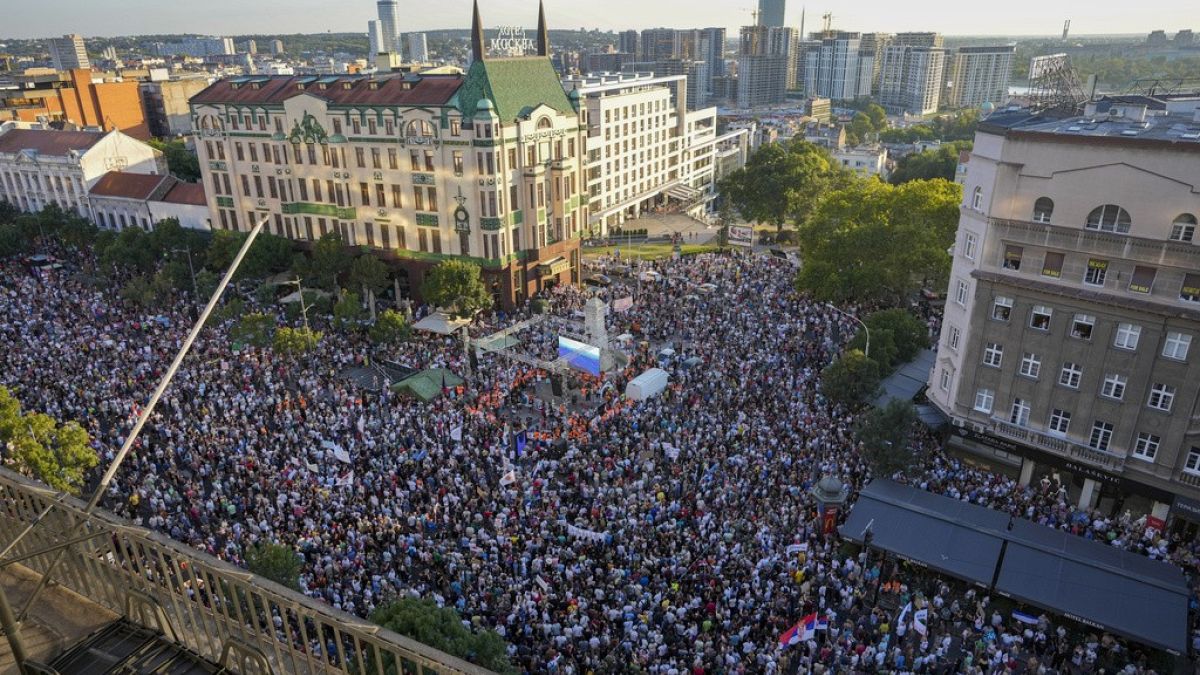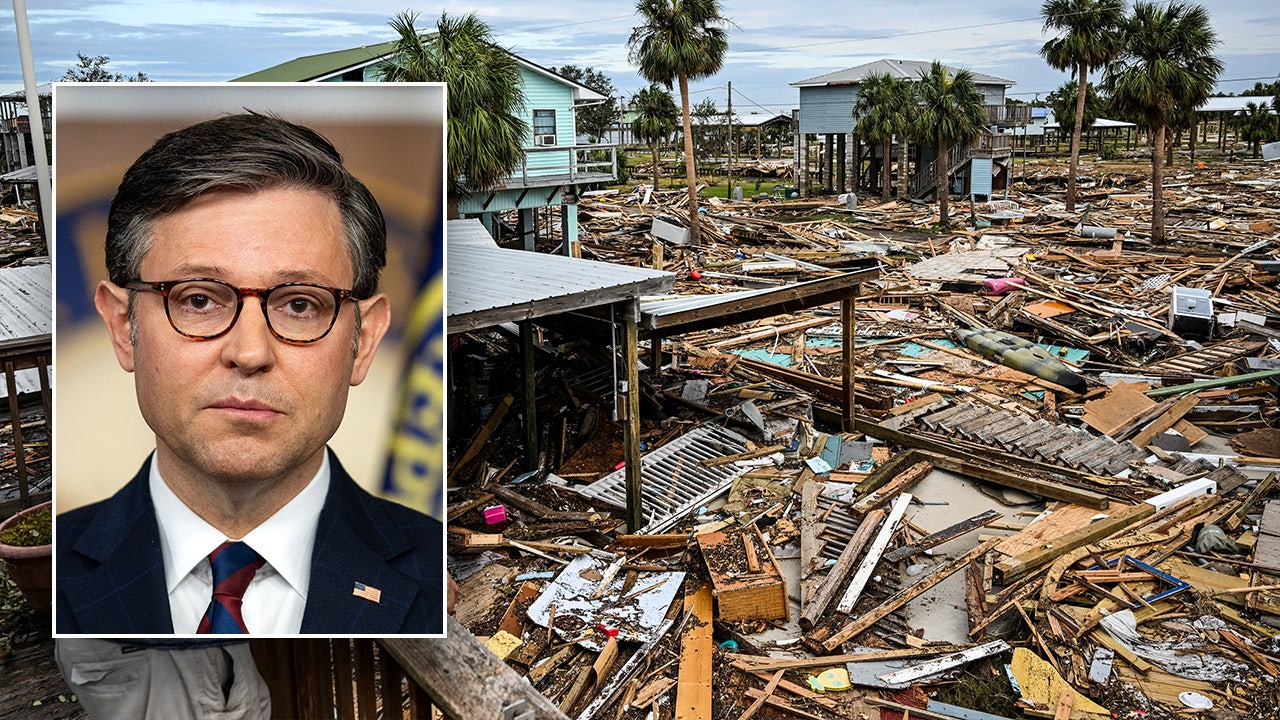World
Brussels calls on Serbia to probe electoral fraud reports

European Union leaders have rebuked Serbia over reports of vote-buying and ballot-box stuffing in Sunday’s snap parliamentary election.
Josep Borrell, the EU’s top diplomat, and Enlargement Commissioner Olivér Várhelyi jointly called on Tuesday for Serbian authorities to follow up on all “credible reports of irregularities” during Sunday’s vote in the Western Balkan country in which incumbent populist president Aleksandar Vučić tightened his grip on power.
Their call came a day after International observers from the Organization for Security and Co-operation in Europe (OSCE) said the vote took place under “unjust conditions.”
The campaign was marred by “harsh rhetoric, bias in the media, pressure on public sector employees and misuse of public resources,” the OSCE said.
The two top EU officials also warned Serbia of potential implications for its EU membership bid.
“In light of these preliminary findings and conclusions, we conclude with concern that the electoral process requires tangible improvement and further reform, as the proper functioning of Serbia’s democratic institutions is at the core of Serbia’s EU accession process,” a joint statement by Borrell and Várhelyi said.
International observers’ recommendations for future elections “should be implemented as soon as possible and well in advance of the next elections,” the leaders also said.
“We also expect that credible reports of irregularities are followed up in a transparent manner by the competent national authorities. This includes also allegations related to the local elections in Belgrade and other municipalities,” they added.
Earlier on Monday, the German foreign office warned that reports of electoral fraud were “unacceptable for a country with EU candidate status.”
Serbia has been an official candidate to join the 27-country bloc since 2012, but talks have stalled in recent years over Belgrade’s refusal to join sanctions against Russia and its failure to normalise relations with neighbouring Kosovo, whose independence it rejects.
The so-called Belgrade-Pristina Dialogue, spearheaded by Borrell in an effort to mediate the decades-long rift, has failed to bear fruit.
An annual assessment of candidate countries’ progress towards EU accession published in November notes that Serbia “still needs to address a number of long-standing recommendations (…) concerning the electoral framework.”
Pro-western, democracy activists have voiced frustration with the EU for failing to punish Vučić’s government for its rising authoritarianism.
Vladimir Medjak, deputy head of the European Movement in Serbia, told Euronews earlier in December that Vučić’s government’s autocratic turn “happened under the EU’s watch.”
“This is one of the reasons why the EU is losing credibility and why the pro-European part of the Serbian society is in a defensive position, because there is nothing to defend,” he said.
Protesters have taken to the streets of the Balkan country over the past two days claiming the weekend vote was rigged, rallied by opposition parties.
The OSCE report cites the underrepresentation of women in the campaign and a lack of “genuine analytical reporting” in national media as elements that detracted from voter choice.
There were numerous irregularities on election day, the report says, including violence, vote-buying and ballot-box stuffing, a form of fraud where a voter submits more than one vote in a ballot.
Opposition parties have raised the alarm on potential election fraud in the capital Belgrade, where Vučić’s Serbian Progressive Party (SNS) faced stiff competition. The OSCE recognises “multiple allegations” of ethnic Serbs busing in thousands of voters from neighbouring Bosnia and Herzegovina to cast their ballots illegally in the Serbian capital.

World
Arcadium Lithium Jumps After Report of Potential Rio Tinto Deal

(Bloomberg) — Shares of Arcadium Lithium Plc jumped after a report said Rio Tinto Plc is in talks to buy the smaller miner.
Most Read from Bloomberg
Rio Tinto is said to be in negotiations to buy Arcadium in a deal that would value the lithium miner between $4 billion to $6 billion, Reuters reported, citing unnamed sources.
Shares of Arcadium jumped more than 30% after the report during after-market trading in New York late Friday.
The negotiations between Rio and Arcadium are ongoing and continued in London this week during a major industry gathering, Reuters reported, adding that the talks may not necessarily result in a deal.
Rio Spokesperson Jesse Riseborough declined to comment. Arcadium didn’t immediately respond to Bloomberg request seeking comments.
The potential deal would make Rio one of the world’s top producers of the battery metal that’s a key component in rechargeable batteries in electric vehicles.
Lithium stocks globally have languished this year as a supply glut overwhelmed demand from battery manufacturers amid slower EV sales.
–With assistance from Joe Deaux.
Most Read from Bloomberg Businessweek
©2024 Bloomberg L.P.
World
Rising from the ashes: Israelis in nation's war-torn south move home a year after October 7 massacre
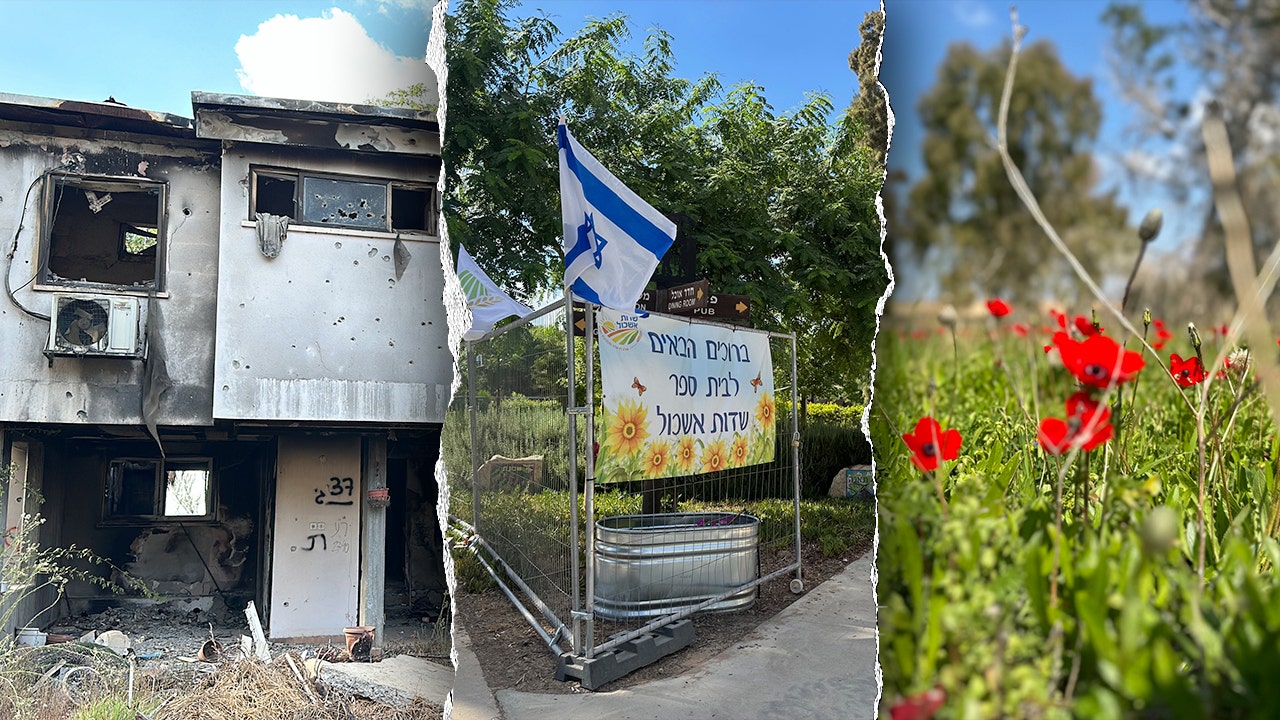
Before October 7, the communities of the mostly agricultural cooperative settlements, commonly known as kibbutzim, near the Gaza Strip, were considered some of the most picturesque places in Israel, characterized by green fields and carpets of vibrant red anemones. Yet, they were also among the most bombarded areas in the country. “Ninety-nine percent of the time, it’s paradise; one percent of the time, it’s hell,” was a common saying among residents.
“It’s fair to say this year, we live in that one percent” Ofer Liberman admits, reflecting on the harsh reality faced by his community. For 22 years, he has served as the spokesperson for Kibbutz Nir Am, nestled in the Gaza envelope.
On October 7, it was Liberman’s daughter, Inbal, the community’s security coordinator, who displayed remarkable courage. She opened the weapons storage lockers and distributed arms to the community’s rapid response team, sending them to various locations along the kibbutz fence. She and the team engaged in face-to-face battles with Hamas terrorists. Her quick actions prevented them from entering the kibbutz and prevented a massacre similar to what occurred in neighboring communities.
ISRAEL’S MILITARY SAYS FORCE IS ‘AT WAR’ WITH HAMAS AS IDF HITS BACK AT TERROR TARGETS
Ruins of burnt out housing on Kibbutz Kissufim after Oct 7, 2023| A sign on a school at Kibbutz Gvulot nearly a year after the terror attacks| fields of Anemones at Kibbutz Nahal Oz. (Efrat Lachter)
On Wednesday, during Rosh Hashanah, the Jewish New Year, Liberman celebrated with his family back in Kibbutz Nir Am. “My wife and I were the only ones to come back in mid-November, while the kibbutz was under full military control. I manage the agriculture in Nir Am, and I had to be here. By the end of March, a small number of families returned, and on August 15, when government funding ended, everyone returned except for 12 families,” he recounted.
“This was a sad holiday; some of our friends still have family members and friends held in Gaza. In the morning, we were informed by the IDF there would be loud noises coming from their fighting in Gaza,” Liberman described the ongoing tension in the region. “People got anxious because it reminded them of October 7 — the booming and gunfire. But we’re managing a routine. People go to work, and children go to school, living my life completely, with sounds of war.”
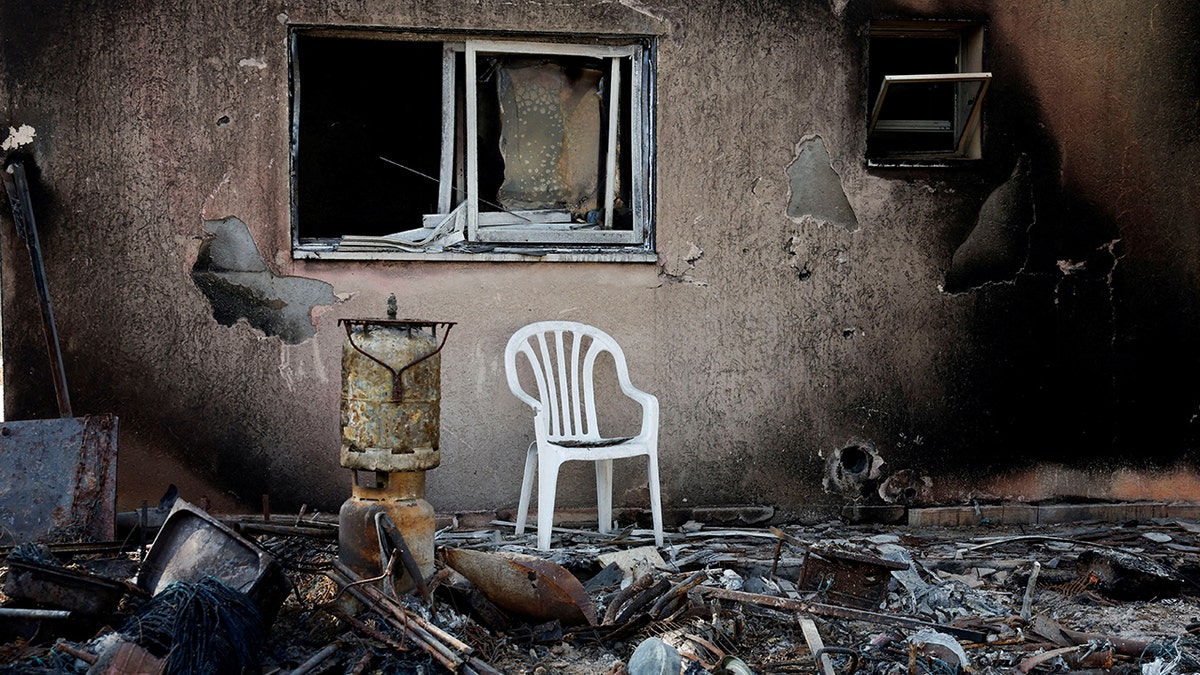
A view shows a destroyed home riddled with bullets, following the deadly October 7 attack by Hamas terrorists from the Gaza Strip, in Kibbutz Kfar Aza, southern Israel on November 2, 2023. (REUTERS/Evelyn Hockstein/File Photo)
After October 7, 15,000 people were evacuated from the 21 kibbutzim in southern Israel, first to hotels and then into temporary housing across the country. Remarkably, about 70% have returned home, a significant achievement considering the ongoing war in Gaza and the devastating impact of the attack, which claimed the lives of some 1,200 people, 319 of whom were kibbutz members, and destroyed hundreds of homes.
FEDERAL AUTHORITIES ISSUE WARNING AHEAD OF OCT. 7 ATTACKS ANNIVERSARY
However, six of the communities where the impact was most severe have yet to return. In Kibbutz Be’eri, 98 men, women, and children were murdered, and 30 were kidnapped. In Kfar Aza, home to 700, 64 people, including women and children, were massacred, and 19 were taken hostage. In Nahal Oz, a small community of 450, 15 were killed and 8 were kidnapped.
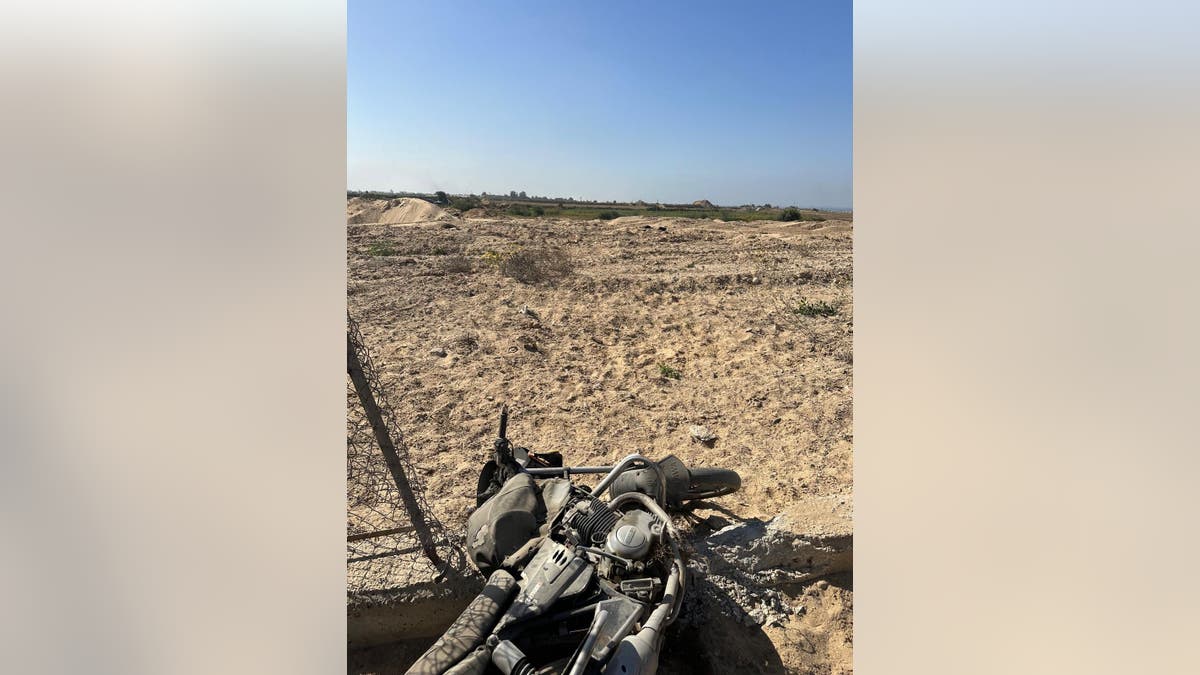
The remains of a motorbike of a terrorist who tried to invade Kibbutz Nir-AM. The terrorist was shot dead by the Kibbutz’s rapid-response team. (Eden Lieberman)
“Only twenty members of Kibbutz Nahal Oz have returned to the kibbutz, while 330 residents — eighty percent of our community — are in Mishmar Ha’emek, a kibbutz in north-central Israel. They’ve been hosting us since October 8,” Amir Tibon, a resident of Nahal Oz, told Fox News Digital. “Being together as one community in this temporary housing has been significant, as we are surrounded by the people we love. Our children still go to school and kindergarten together, which makes a big difference.”

Israeli army soldiers search the remains of a torched vehicle for forensic evidence at the site of the October 7 attack on the Supernova desert music Festival by Palestinian terrorists near Kibbutz Reim in the Negev desert in southern Israel on October 13, 2023. The rave event had drawn thousands of party-goers from October 6 to the desert site close to Kibbutz Reim, less three miles from the Gaza Strip. But it turned into a horror show early the next day when Hamas militants crossed the border on motorcycles, vans, speed boats or paramotors, launching their surprise offensive on Israel. ((Photo by JACK GUEZ/AFP via Getty Images))
On October 7, Tibon and his wife Miri were rescued along with their two younger daughters, thanks to his mother Gali, and father, retired IDF Major General Noam Tibon, who drove from Tel Aviv to the kibbutz to rescue them. On their way, they rescued survivors of the music festival massacre and helped wounded Israeli soldiers. Hours after leaving his home in Tel Aviv, Amir’s father battled a Hamas terrorist in Nahal Oz and saved his family. Tibon later chronicled his experiences in his new book, “The Gates of Gaza: A Story of Betrayal, Survival, and Hope in Israel’s Borderline,” where he intertwines his personal story with the history of the kibbutz.
FOREIGN SURVIVORS OF BRUTAL HAMAS ATTACK ON ISRAEL RECALL TERROR MASSACRE: ‘EVERYTHING WAS BURNING’
“The kibbutzim’s key role in the history of Israel, in creating and protecting the borders of Israel, remains crucial. This way of life, with a strong emphasis on community and togetherness, is more important now than ever,” Tibon believes.
“A kibbutz can be understood as a microcosm of collective living, where community, equality and shared labor play vital roles in the daily lives of its members,” Ayelet Harris, head of the community division in the Kibbutz Movement, said of the leadership dynamics in these communities.
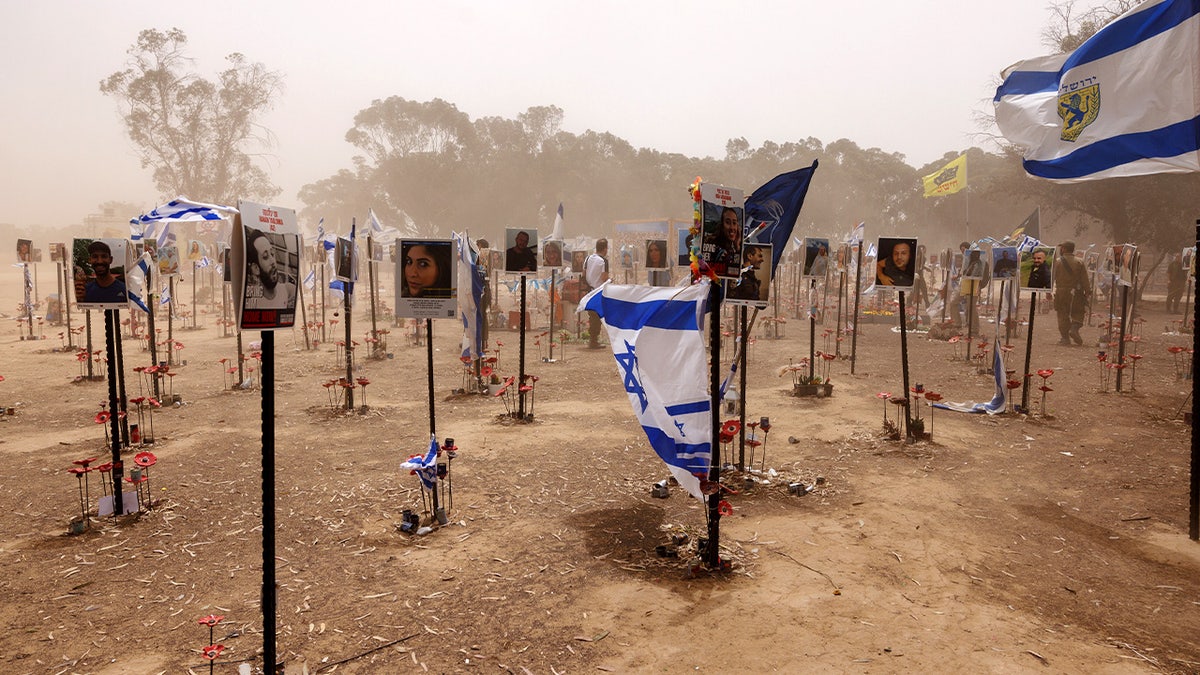
Memorials at the site of the Oct. 7 Hamas terror attack on the Supernova music festival near Kibbutz Re’im, Israel, on Monday, May 27, 2024. (Kobi Wolf/Bloomberg via Getty Images)
“The Kibbutzim institutional structure has been crucial in the process of recovery. I saw women and men leading their kibbutzim and prioritizing the mission of returning, even in uncertain times. They decided to focus on the mission of going, working through their emotional states while being part of the teams planning the return. This sense of ownership fosters a deeper sense of belonging than in other places where people feel less influence over future plans.”
Tibon reflected on the complexities surrounding the decision to return home. “This is a conversation we have every day. The issue is about the sense of security that the government and IDF must provide, and overcoming the psychological barriers of returning to a place where such horrors occurred.”

Fields of anemones grow in Kibbutz Nahal Oz. (Photo: Efrat Lachter.)
The ongoing trauma is compounded by the uncertainty of their friends and family who remain in Hamas captivity. “We received five of our hostages back alive in November, thanks to a deal orchestrated by President Biden. But we still have two friends, Omri and Zachi, in the hands of the enemy,” Tibon explained. “For me, going back to the kibbutz means living in a house where a neighbor was killed in the house in front of me, and another neighbor was murdered in the house behind. This is where I will raise my daughters. I believe I can do that, but I don’t know if I can pass by the homes of these two friends and know they were left to die in the tunnels of Gaza.”
VIDEOS OF HAMAS BRUTALITY TOWARD ISRAELIS EERILY REMINISCENT OF ISIS TACTICS

A girl and her father walk past a boulder and photo for the killed soldier Roni Eshel at a new memorial for the surveillance soldiers killed on October 7th during the attack on the Nahal Oz base on October 4, 2024, near Nahal Oz, Israel. On the morning of October 7, the Nahal Oz base was attacked by Hamas terrorists, where 66 soldiers were killed, including 15 female soldiers who operated surveillance cameras. Some of the female soldiers who were not killed were taken hostage on October 7, 2023. (Alexi J. Rosenfeld/Getty Images)
Last week, while walking around Kibbutz Gvulot, the contrast between the children’s laughter and the reality of their lives was striking. Children played soccer on the grass, joyfully unaware of the shadows cast by the shelters positioned every few meters, decorated with pictures of beloved cartoon characters. The regional school at the center of the kibbutz has been improvised from structures that existed prior to October 7.
“After the attack, we found ourselves in a hotel in Eilat with a large part of the traumatized community of the south,” Lior Dafner, the chairman of Kibbutz Gvulot, recalls. “Every day we received news about more people we knew being kidnapped or murdered- a truly incomprehensible situation.” Kibbutz Gvulot was one of the very few places that were not raided during the October 7 massacre.
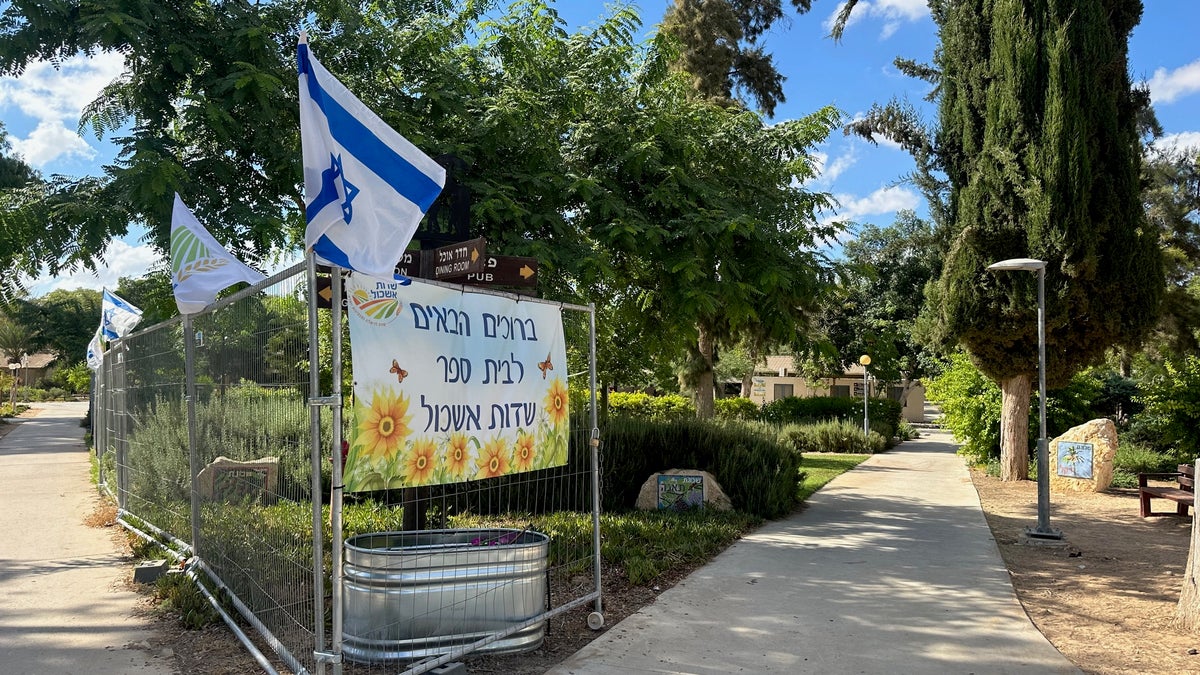
The sign at Kibbutz Gvulot school reads, “Welcome to Sedot Eskhol school.” The school reopened last month. (Efrat Lachter)
“You see a slow deterioration of people into helplessness; there are no frameworks for children. We realized we needed to establish ourselves and figure out where to go next. We wanted to ensure that the children and staff started the year on September 1, like all children in the country, and finish on June 30, in the same classroom with the same teacher and group of kids—all in a safe and stable environment. After everything they’ve been through, losing friends and teachers, seeing them now in school gives us hope. This is the future. It gives us hope for what lies ahead,” Dafner said.
Throughout the communities that are back in their homes, there is a call for resilience despite the challenges. Liberman said, “I think we had to return here and hold this place. We need to preserve our country. I was just in New York, sitting with Jews who lamented that they are not in Israel. You see the synagogue surrounded by police protecting them because they are afraid. We, the Jewish people, are unwelcome anywhere in the world. So, we have no choice but to remain in our state. I hope that after the fighting in the south and north ends, and once we bring our hostages home, we can return to living that ninety-nine percent of paradise.”
World
Israel hits Beirut’s southern suburbs with a dozen airstrikes
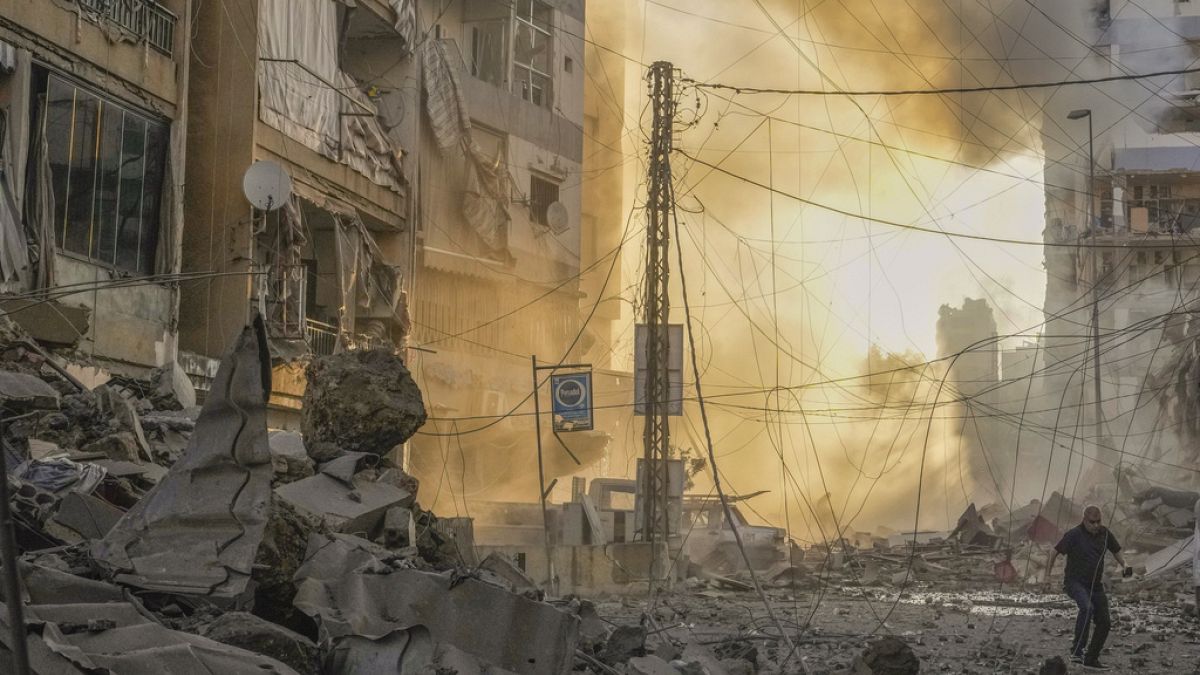
Meanwhile tens of thousands of people in Lebanon, including Palestinian refugees, continued to flee the widening conflict.
Israel also struck a Palestinian refugee camp deep in the north for the first time as it targeted both Hezbollah and Hamas fighters.
Israel’s attack on the Beddawi camp near Lebanon’s northern city of Tripoli killed an official with Hamas’ military wing along with his wife and two young daughters, the Palestinian militant group said. Hamas later said another military wing member was killed in an Israeli strike in Lebanon’s eastern Bekaa Valley.
Israel’s military said it killed two senior officials with Hamas’ military wing in Lebanon, where fighting has escalated in recent weeks. Israel has killed several Hamas officials there since the Israel-Hamas war began in addition to most of the top leadership of the Lebanon-based Hezbollah.
Plumes of smoke dominated the skyline over Beirut’s densely populated southern suburbs, where Hezbollah has a strong presence. Israel says it is targeting Hezbollah commanders and military equipment and aims to drive the militant group away from shared borders.
At least 1,400 Lebanese, including civilians, paramedics and Hezbollah fighters, have been killed and 1.2 million driven from homes in less than two weeks.
The Iranian-backed Hezbollah, the strongest armed force in Lebanon, began firing rockets into Israel almost immediately after Hamas’ Oct. 7 attack, calling it a show of support for the Palestinians. Hezbollah and Israel’s military have traded fire almost daily.
Last week, Israel launched what it called a limited ground operation into southern Lebanon after a series of attacks killed long-time Hezbollah leader Hassan Nasrallah and others. Nine Israeli soldiers have been killed in the intense ground clashes that Israel says have killed 250 Hezbollah fighters.
Israel’s military on Saturday said about 90 projectiles were fired from Lebanon into Israeli territory. Most were intercepted, but several fell in the northern Arab town of Deir al-Asad, where police said three people were lightly injured.
Iran’s foreign minister, Abbas Araghchi, told reporters in Damascus that “we are trying to reach a cease-fire in Gaza and in Lebanon.” The minister did not name the countries putting forward initiatives, saying they include regional states and some outside the Middle East.
Araghchi spoke a day after the supreme leader of Iran praised its recent missile strikes on Israel and said it was ready to do it again if necessary.
At least six people were killed in more than a dozen Israeli airstrikes overnight and into Saturday, according to the National News Agency, a Lebanese state-run new outlet.
Nearly 375,000 people have crossed from Lebanon into Syria, fleeing Israeli strikes, in less than two weeks, according to a Lebanese government committee.
Associated Press journalists saw thousands of people continuing to cross the Masnaa Border Crossing on foot, even after Israeli airstrikes left huge craters in the road leading to it on Thursday. Much of Hezbollah’s weaponry is believed to come from Iran through Syria.
The Israeli military said special forces were carrying out targeted ground raids against Hezbollah infrastructure in southern Lebanon, destroying missiles, launchpads, watchtowers and weapons storage facilities. It said troops dismantled tunnel shafts that Hezbollah used to approach the Israeli border.
Meanwhile, The Netherlands has become the latest European country to repatriate their citizens from Lebanon as the conflict escalates.
185 people arrived at Eindhoven Air Base from Lebanon on Friday evening, including more than a hundred Dutch citizens and their family members.
A Belgian, an Irish and a Finnish national were also on board.
The Dutch Ministry of Foreign Affairs received around 500 registrations for two repatriations flights, with another expected on Saturday
Israel and Hezbollah have traded fire across the Lebanese border almost daily since Hamas’ cross-border attack on October 7, 2023, which killed 1,200 Israelis and took 250 others hostage.
Israel declared war on Hamas following the attack, with more than 41,000 Palestinians reportedly killed in Gaza Strip in the Israeli response. Just over half the dead were women and children, according to local health officials.
Nearly 2,000 people have been killed in Lebanon since that conflict began. Most of them have died since September 23, according to the Lebanese Health Ministry.
-
/cdn.vox-cdn.com/uploads/chorus_asset/file/25439572/VRG_TEC_Textless.jpg)
/cdn.vox-cdn.com/uploads/chorus_asset/file/25439572/VRG_TEC_Textless.jpg) Technology3 days ago
Technology3 days agoCharter will offer Peacock for free with some cable subscriptions next year
-

 World2 days ago
World2 days agoUkrainian stronghold Vuhledar falls to Russian offensive after two years of bombardment
-

 World2 days ago
World2 days agoWikiLeaks’ Julian Assange says he pleaded ‘guilty to journalism’ in order to be freed
-

 Technology2 days ago
Technology2 days agoBeware of fraudsters posing as government officials trying to steal your cash
-

 Politics1 week ago
Politics1 week agoSecret Service agent accused of sexually assaulting Harris campaign staffer: report
-

 World1 week ago
World1 week agoPutin outlines new rules for Russian use of vast nuclear arsenal
-

 Sports18 hours ago
Sports18 hours agoFreddie Freeman says his ankle sprain is worst injury he's ever tried to play through
-

 Virginia4 days ago
Virginia4 days agoStatus for Daniels and Green still uncertain for this week against Virginia Tech; Reuben done for season
